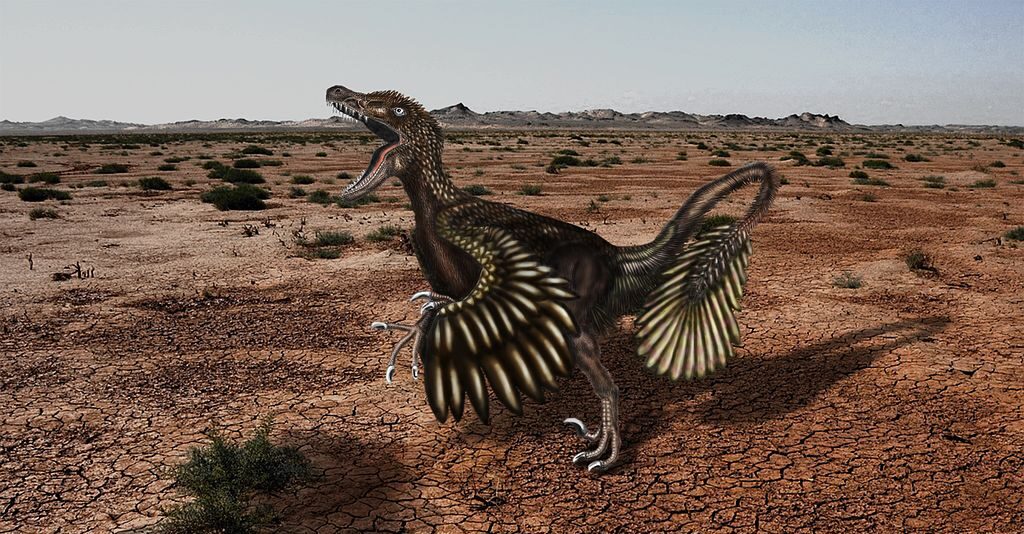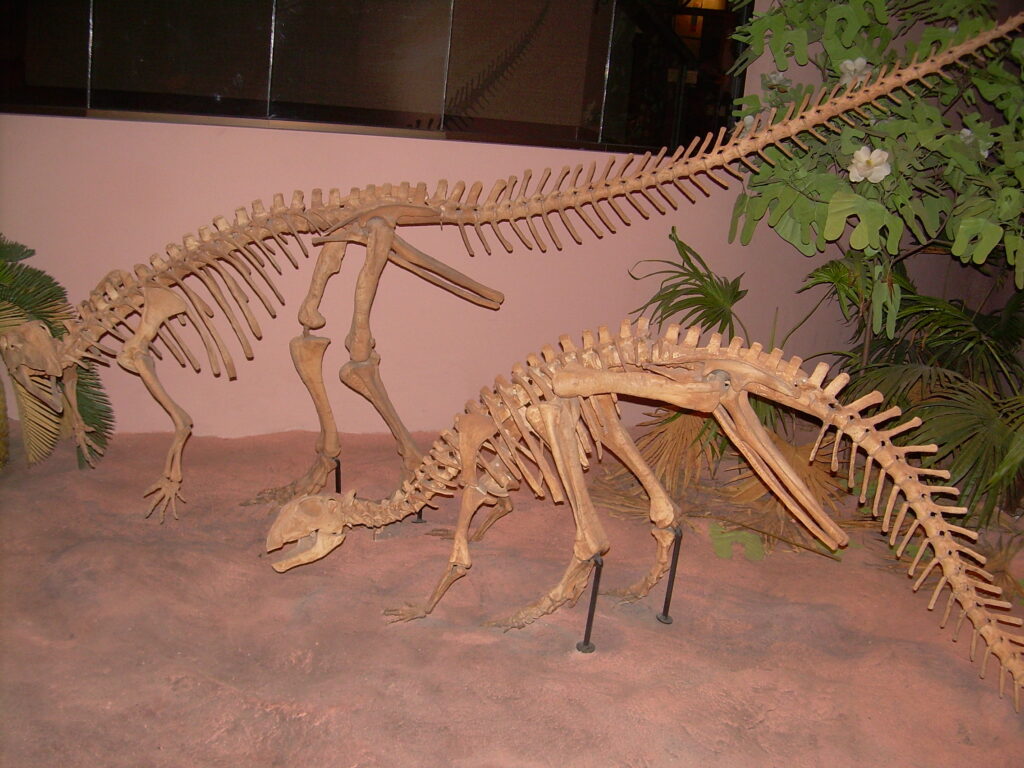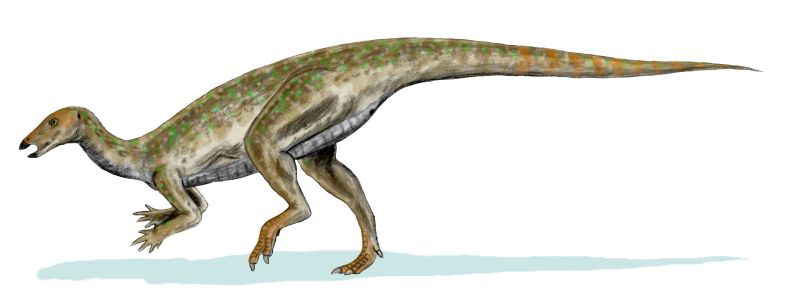The connection between dinosaurs and birds represents one of the most fascinating evolutionary stories in natural history. Rather than disappearing completely after the Cretaceous-Paleogene extinction event approximately 66 million years ago, certain dinosaur lineages survived and evolved into the birds we know today. This remarkable transition is supported by extensive fossil evidence, particularly from theropod dinosaurs – the primarily carnivorous, bipedal group that includes familiar names like Tyrannosaurus rex and Velociraptor. The evolutionary link between dinosaurs and birds is so strong that modern paleontologists classify birds as avian dinosaurs, considering them the only dinosaur lineage to survive into the present day. Examining specific dinosaur species offers clear evidence of this evolutionary relationship, revealing how feathers, hollow bones, and other avian characteristics emerged long before the first true birds took flight.
Archaeopteryx: The Iconic Missing Link
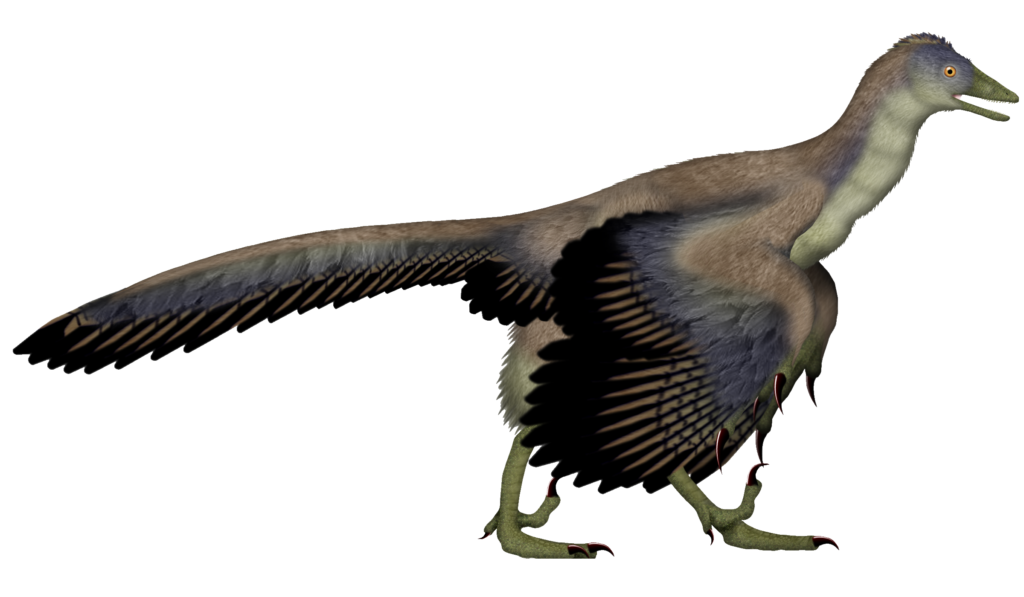
Discovered in 1861 in Germany, Archaeopteryx represents one of the most important transitional fossils ever found, bridging the gap between non-avian dinosaurs and modern birds. Living approximately 150 million years ago during the Late Jurassic period, this crow-sized creature possessed a remarkable combination of reptilian and avian features. While it retained dinosaurian characteristics like a long bony tail, teeth, and three clawed fingers, Archaeopteryx also displayed unmistakably bird-like traits, including feathered wings and a furcula (wishbone). The exquisitely preserved feather impressions in Archaeopteryx fossils provided some of the first concrete evidence that birds evolved from dinosaurs. Though capable of limited flight, Archaeopteryx lacked the advanced flight adaptations of modern birds, suggesting it represents an early stage in the evolution of avian flight rather than a direct ancestor of modern birds.
Microraptor: The Four-Winged Glider

Microraptor offers compelling evidence for the dinosaur-bird connection through its extraordinary four-winged body plan. This small dromaeosaurid dinosaur, living approximately 120 million years ago during the Early Cretaceous period, possessed long flight feathers not only on its arms but also on its legs, creating a unique four-winged configuration unlike any living bird today. Detailed fossil evidence suggests Microraptor was capable of gliding between trees in ancient forests, potentially representing an experimental evolutionary path in the development of flight. The creature’s iridescent black feathers, similar to those of modern crows and ravens, indicate that complex feather colors evolved early in the dinosaur-bird transition. Though Microraptor isn’t a direct ancestor of modern birds, its existence demonstrates how diverse feathered dinosaurs were experimenting with different flight mechanisms, with some features eventually being selected for in the avian lineage.
Velociraptor: More Than Just a Movie Monster

Far from the scaled, reptilian depiction popularized by Hollywood, real Velociraptors were fully feathered dinosaurs with numerous bird-like qualities. These dromaeosaurid dinosaurs, living approximately 75-71 million years ago during the Late Cretaceous, were considerably smaller than their movie counterparts—about the size of a turkey—and covered in feathers as evidenced by quill knobs (attachment points for feathers) discovered on Velociraptor forearm fossils. These quill knobs are identical to those found in modern birds, strongly suggesting the presence of large, well-developed feathers. Velociraptors also shared other avian features with today’s birds, including hollow bones, a wishbone, and a wrist joint capable of the same folding motion birds use to tuck their wings. Though built for running rather than flying, Velociraptor represents part of the dromaeosaurid family that shares a close common ancestor with the lineage that eventually produced modern birds.
Sinosauropteryx: The First Confirmed Feathered Dinosaur

The discovery of Sinosauropteryx in 1996 revolutionized our understanding of dinosaur appearance and the evolution of feathers. This small compsognathid dinosaur from Early Cretaceous China (approximately 125 million years ago) was the first non-avian dinosaur definitively proven to possess feathers, upending the traditional image of dinosaurs as purely scaly creatures. Sinosauropteryx had primitive feather-like structures called protofeathers—simple filaments that formed a fuzzy covering across its body and tail, resembling a downy coat more than the complex flight feathers of modern birds. Advanced imaging techniques have even revealed that Sinosauropteryx had a reddish-brown and white striped tail, providing rare evidence of dinosaur coloration. The presence of these simple feathers in a relatively primitive theropod suggests that feathers evolved initially for insulation or display rather than flight, much like how some modern flightless birds retain feathers for temperature regulation and social signaling.
Confuciusornis: Early Bird with Modern Features
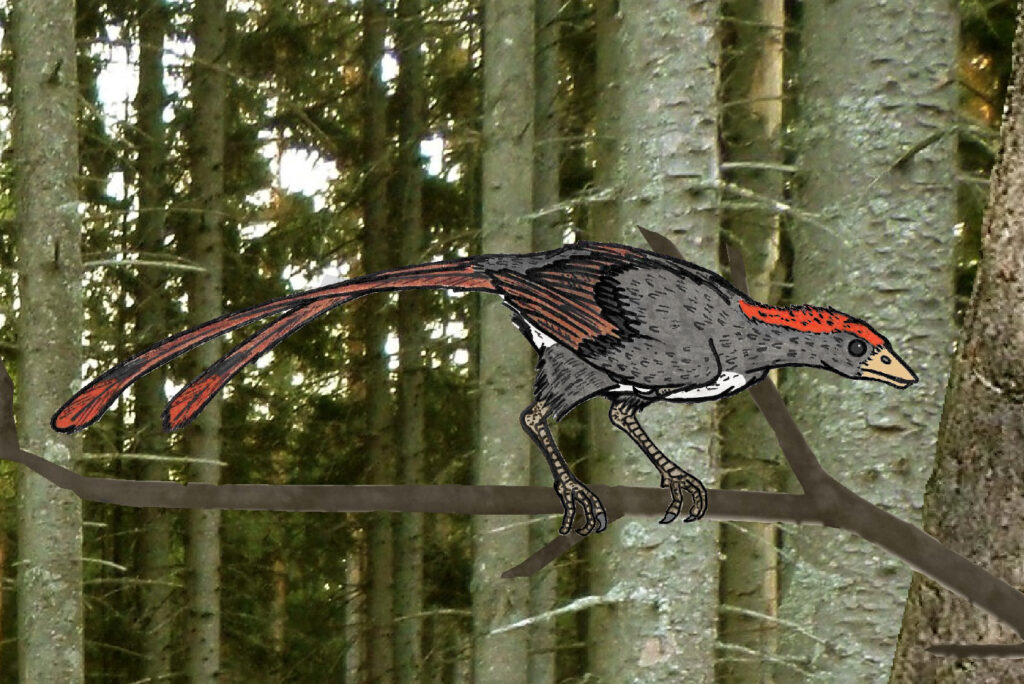
Confuciusornis represents one of the earliest birds with truly modern avian features, making it a crucial link in understanding the dinosaur-to-bird transition. Living approximately 125-120 million years ago during the Early Cretaceous period, this crow-sized bird retained some dinosaurian features like clawed fingers on its wings, but had evolved several key innovations that characterize modern birds. Most notably, Confuciusornis was among the first birds to replace teeth with a toothless beak, a defining feature of most modern avian species. Male specimens possessed long, elaborate tail feathers similar to those seen in modern birds of paradise, suggesting that sexual selection was already influencing avian evolution. Unlike Archaeopteryx, Confuciusornis had a more advanced shoulder structure better adapted for the downstroke needed in powered flight, indicating it was a more proficient flier. The thousands of well-preserved Confuciusornis fossils discovered in China’s Jehol Biota provide exceptional documentation of the early diversification of birds from their dinosaur ancestors.
Anchiornis: Detailed Insights into Dinosaur Plumage
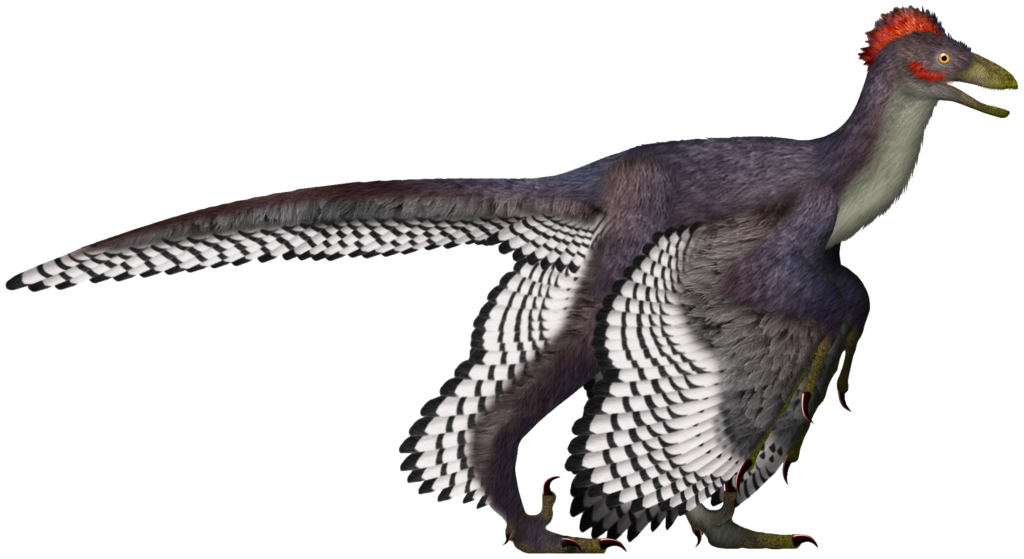
Anchiornis huxleyi offers perhaps the most complete picture of dinosaur feather patterns and coloration of any fossil discovered to date. This small, four-winged paravian dinosaur from Late Jurassic China (approximately 160 million years ago) was preserved with such exceptional detail that scientists have been able to reconstruct its entire body covering and coloration. Using advanced chemical analysis of fossil melanosomes (pigment-containing structures), researchers determined that Anchiornis had a primarily grey body with white stripes on its wings and legs, and a reddish-brown crest on its head. The creature’s limbs were completely covered in feathers, extending to its toes, creating a four-winged configuration similar to Microraptor. Despite predating Archaeopteryx, Anchiornis already possessed pennaceous feathers (with central shaft and barbs) remarkably similar to those of modern birds, suggesting that advanced feather structures evolved earlier than previously thought. This small dinosaur demonstrates that the line between “bird” and “non-avian dinosaur” was already blurring by the Late Jurassic.
Feather Evolution: From Insulation to Flight

The evolution of feathers represents one of the clearest connections between dinosaurs and modern birds, revealing a fascinating progression from simple structures to the complex flight apparatus of today’s avian species. Paleontological evidence suggests feathers first appeared in dinosaurs not for flight but for insulation, similar to how mammalian hair functions. The earliest feather-like structures were simple, unbranched filaments (stage 1 feathers) seen in dinosaurs like Sinosauropteryx, providing warmth but incapable of generating lift. Over time, these filaments evolved greater complexity, developing branching structures, flattened vanes, and asymmetrical shapes necessary for flight (stages 2-5). By examining the distribution of feather types across the dinosaur family tree, scientists have determined that pennaceous feathers (with central shaft and branching barbs) evolved at least 50 million years before birds themselves. Some dinosaurs, particularly dromaeosaurids like Microraptor, developed aerodynamically functional feathers but used them for purposes other than powered flight, such as gliding, display, or brooding eggs. This gradual progression from simple to complex feathers across multiple dinosaur lineages provides compelling evidence for the evolutionary continuum between dinosaurs and birds.
Skeletal Similarities: More Than Skin Deep
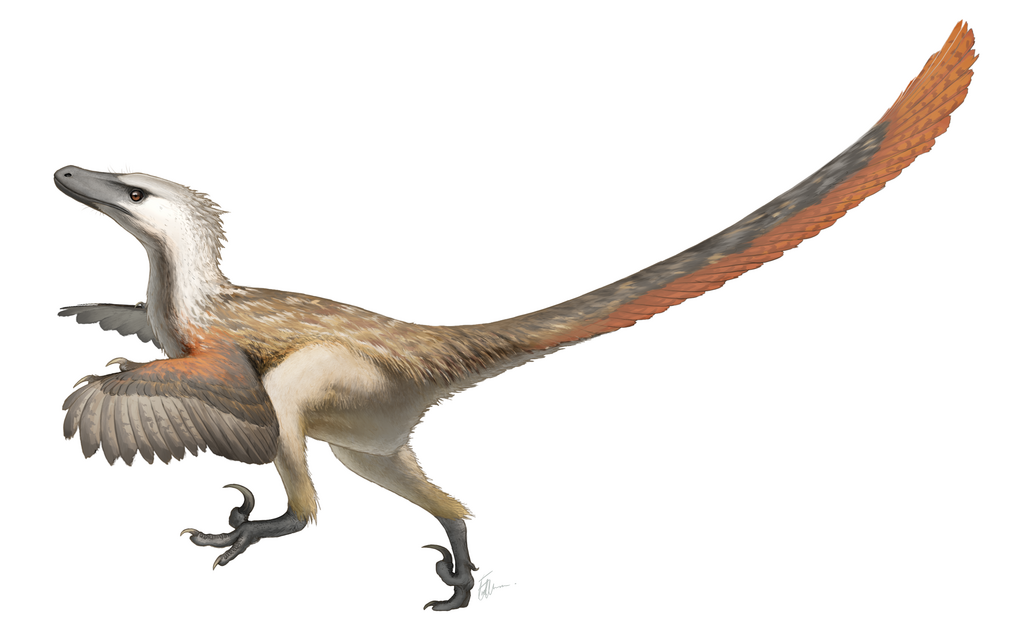
The connection between dinosaurs and birds extends far beyond feathers, with profound similarities in skeletal structure providing strong evidence for their evolutionary relationship. Modern birds share numerous skeletal features with their theropod ancestors, including hollow, pneumatic bones that reduce weight while maintaining strength – a crucial adaptation for flight that first appeared in non-flying dinosaurs. The furcula (wishbone), long considered a uniquely avian feature, is now known to be present in many theropod dinosaurs, including Velociraptor and Tyrannosaurus. Similarly, the complex wrist joint that allows birds to fold their wings developed first in non-avian theropods. The three-toed foot structure of birds precisely mirrors that of many bipedal dinosaurs, with both groups sharing a similar ankle configuration and digitigrade (toe-walking) posture. Perhaps most convincing is the uncinate processes – small projections on the ribs that provide attachment points for respiratory muscles – found in both birds and theropod dinosaurs but absent in other reptiles. These deep structural similarities cannot be explained by convergent evolution alone and represent strong evidence that birds are living theropod dinosaurs.
Nesting Behavior and Reproduction: Parental Dinosaurs

The reproductive biology and parenting strategies of certain dinosaurs provide additional compelling connections to modern birds. Unlike most reptiles, which typically abandon their eggs after laying them, many theropod dinosaurs showed sophisticated nesting behaviors remarkably similar to those of modern birds. Fossil discoveries of oviraptorids preserved while brooding their eggs demonstrate that these dinosaurs sat directly atop their nests, using body heat to incubate their eggs just as birds do today. The eggs themselves were arranged in circular patterns similar to bird nests rather than buried in the ground like reptile eggs. Microscopic studies of dinosaur eggshells show porous structures that allowed for gas exchange similar to bird eggs, suggesting dinosaur embryos had high metabolic rates requiring significant oxygen. Perhaps most bird-like was the reproductive system itself – unlike modern reptiles with two functioning oviducts, fossil evidence suggests some theropod dinosaurs had already evolved to use only the left oviduct for egg production, exactly as in modern birds. This specialized reproductive anatomy, combined with brooding behaviors and nest construction, represents a clear evolutionary link between parental care in dinosaurs and the elaborate nesting behaviors observed in their avian descendants.
Respiratory System: Breathing Like Birds
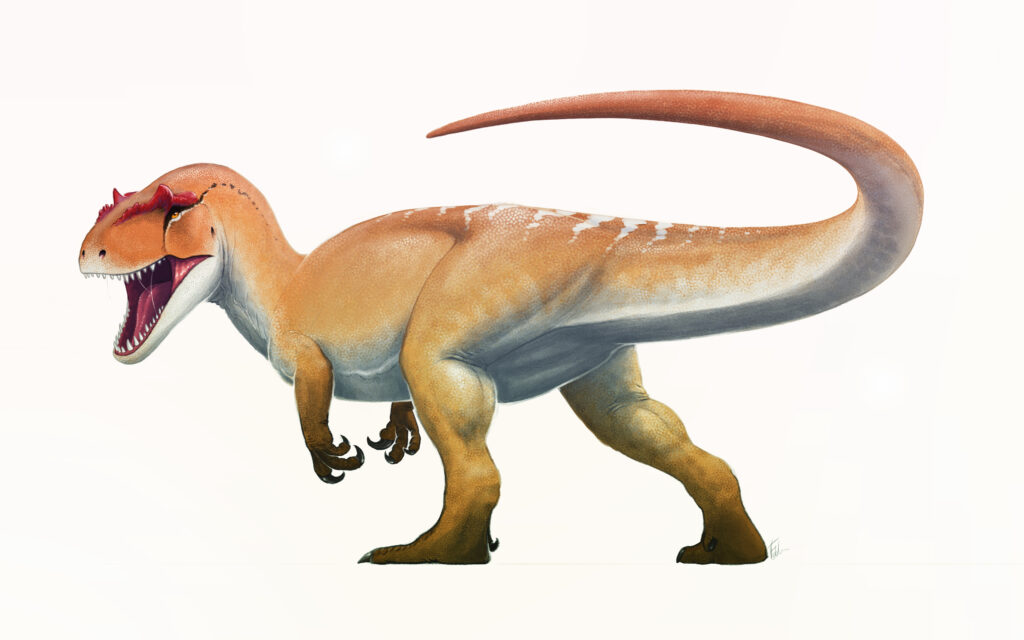
One of the most sophisticated connections between dinosaurs and birds lies in their shared respiratory anatomy, which differs dramatically from that of other reptiles. Modern birds possess a unique flow-through respiratory system with air sacs that allow for continuous, unidirectional airflow through the lungs even during both inhalation and exhalation, creating a highly efficient oxygen exchange system necessary for the metabolic demands of flight. Remarkably, paleontologists have found evidence of a similar system in theropod dinosaurs through the presence of pneumatic foramina – small holes in the vertebrae and other bones where air sacs would have connected. These structures, absent in most reptiles but present in dinosaurs like Velociraptor and Allosaurus, indicate that the avian-style respiratory system evolved long before the first birds took flight. The presence of uncinate processes (extensions on the ribs that support breathing muscles) in both birds and theropod dinosaurs further strengthens this connection. This advanced respiratory adaptation likely evolved initially to support the high metabolic rates of active predatory dinosaurs, providing a pre-adaptation that would later prove essential for powered flight in birds.
Growth Rates and Metabolism: Warm-Blooded Dinosaurs?
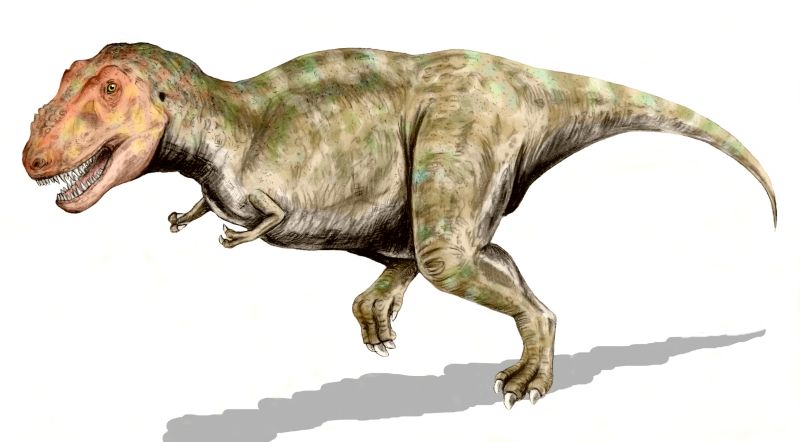
The question of dinosaur metabolism has profound implications for understanding their relationship to birds, with growing evidence suggesting many dinosaurs were more bird-like than reptilian in their physiology. By studying growth lines in fossilized bones – similar to tree rings – scientists have determined that many theropod dinosaurs grew rapidly during early development, much like modern birds and mammals, but unlike reptiles, which grow slowly throughout their lives. Isotopic analysis of dinosaur bones indicates body temperatures significantly higher than ambient environmental temperatures, suggesting some form of internal temperature regulation similar to that seen in birds. The presence of insulating feathers across numerous dinosaur lineages further supports the idea that these animals needed to conserve body heat, a requirement unnecessary for truly cold-blooded animals. Perhaps most compelling is evidence of medullary bone – a special calcium-rich bone tissue formed by female birds during egg-laying – discovered in a Tyrannosaurus rex specimen, demonstrating a reproductive physiology identical to modern birds. This combination of rapid growth, elevated metabolism, and specialized reproductive physiology suggests many dinosaurs already possessed the “warm-blooded” characteristics typically associated with birds long before true avians evolved.
The Evolutionary Legacy: Why Understanding the Dinosaur-Bird Connection Matters

The evolutionary relationship between dinosaurs and birds represents more than just an interesting scientific footnote – it fundamentally transforms our understanding of both groups and provides crucial insights into evolutionary processes. Recognizing birds as living dinosaurs completely reframes our perception of dinosaur extinction, revealing that rather than disappearing entirely, dinosaurs underwent an extraordinary adaptive radiation that continues to this day with over 10,000 bird species worldwide. This perspective allows scientists to use living birds as models for understanding aspects of dinosaur biology difficult to determine from fossils alone, such as behavior, soft tissue anatomy, and physiology. The dinosaur-bird transition also provides one of the most thoroughly documented examples of major evolutionary change in the fossil record, offering invaluable evidence for how complex adaptations develop through natural selection and how new body plans emerge. For conservation biologists, understanding birds as dinosaurs adds historical depth to biodiversity protection efforts, highlighting how current avian diversity represents only the latest chapter in an evolutionary story spanning over 150 million years. By studying the dinosaurs that connect most directly to modern birds, we gain not only a clearer picture of prehistoric life but also a deeper appreciation for the evolutionary processes that shape all life on Earth.

